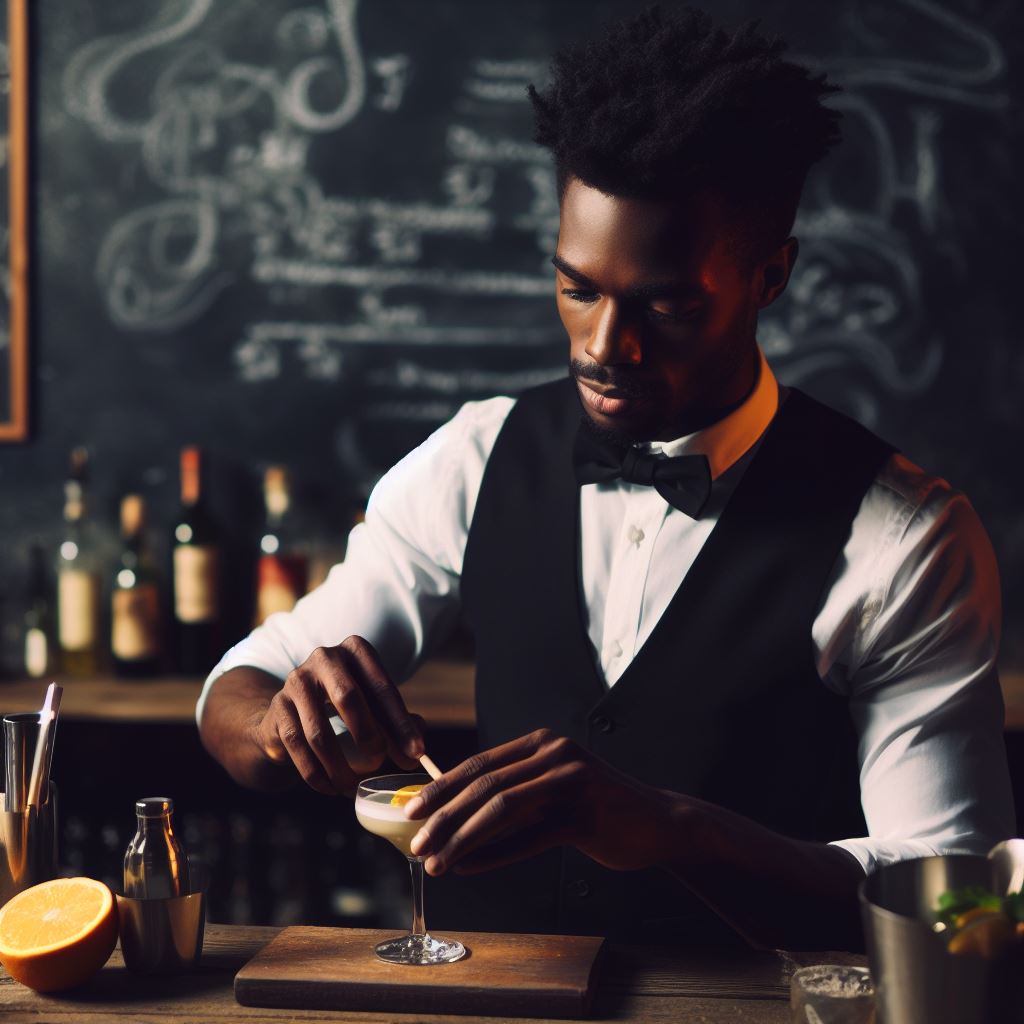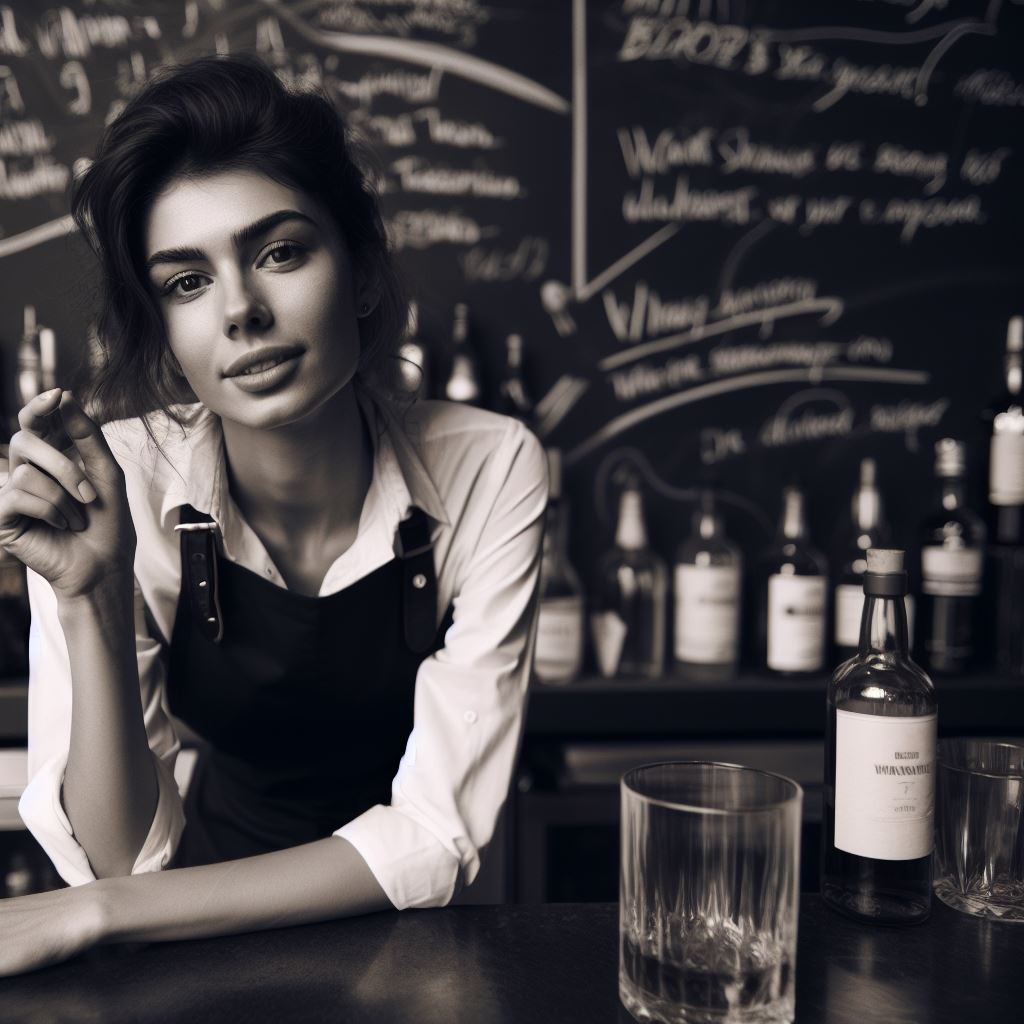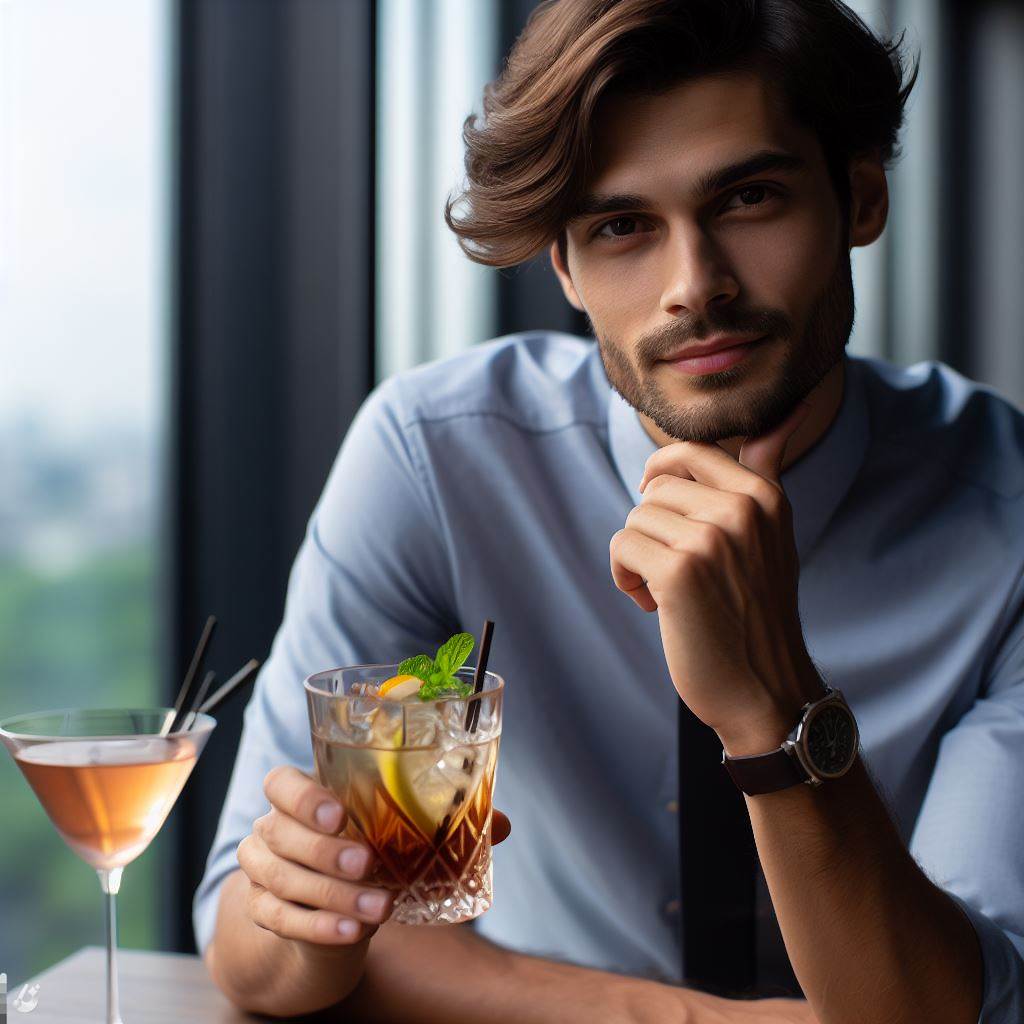Introduction
The evolution of the American cocktail scene has been a fascinating journey that reflects the changing tastes and trends in American culture.
Cocktails have become an integral part of socializing and indulgence, with their popularity soaring over the years.
In this blog post, we will explore the development of the American cocktail scene, from its humble beginnings to the thriving and diverse industry it is today.
Through this exploration, we will understand how cocktails have shaped American culture and continue to do so.
Thesis statement stating the purpose of the blog post
Thesis Statement: This blog post aims to provide a comprehensive timeline of the evolution of the American cocktail scene, showcasing its significance and growth in American culture.
Cocktails, as we know them today, are deeply rooted in American history and culture.
They have played a crucial role in celebrations, gatherings, and even political movements throughout the years.
From classic cocktails like the Old Fashioned and Martini to innovative creations, each era has contributed to the ever-expanding repertoire of American cocktails.
Following the prohibition era in the 1920s, the cocktail scene experienced a resurgence with a focus on creativity and craftsmanship.
Speakeasies became secret havens where innovative mixologists crafted unique drinks, pushing the boundaries of traditional cocktail recipes.
The mid-20th century witnessed a shift towards vibrant and fruit-forward cocktails, influenced by the Tiki culture.
Exotic ingredients and elaborate garnishes became the norm, as bartenders sought to transport patrons to faraway tropical destinations with each sip.
In recent years, the American cocktail scene has embraced a return to classic cocktails, with a contemporary twist.
Craft cocktails bars, with their focus on fresh ingredients and artisanal spirits, have become the go-to destination for cocktail enthusiasts.
Therefore, the American cocktail scene has evolved from humble beginnings to a thriving industry that continues to shape and inspire American culture.
Cocktails have transcended mere drinks, becoming symbols of creativity, craftsmanship, and indulgence.
By tracing their evolution, we gain a deeper appreciation for the artistry and innovation behind this beloved aspect of American socializing.
Early Beginnings: Colonial Era and Early 19th Century
During the colonial era, cocktails in America had humble beginnings but soon evolved into a prominent element of American culture.
The early origins of cocktails can be traced back to this period, influenced largely by European settlers and the introduction of distilled spirits.
The influence of European settlers and the introduction of distilled spirits
European settlers brought with them their traditions of drinking and distilling spirits, such as rum from the Caribbean and brandy from Europe.
Transform Your Career Today
Unlock a personalized career strategy that drives real results. Get tailored advice and a roadmap designed just for you.
Start NowThese spirits became the foundation for the development of early cocktails in America.
The popularity of these distilled spirits grew rapidly, and soon, taverns and inns began to serve them to cater to the demand.
Notable cocktails that emerged during this period, such as the flip and the sling
Notable cocktails emerged during this time, such as the flip and the sling.
Flips were made by mixing a combination of spirits, sugar, and spices, then adding a hot iron poker to create a frothy texture.
The sling, on the other hand, consisted of a mixture of spirits, water, sugar, and lemon juice, serving as a refreshing and invigorating drink.
Taverns played a vital role in the social aspect of cocktail consumption during the colonial era.
People gathered in these establishments not only for a casual drink but also for socializing and conducting business.
Taverns became meeting places where ideas were exchanged, politics were discussed, and friendships were formed.
They were the hotspots for experiencing the latest trends in cocktail creations and witnessing the evolution of mixology.
The rise of taverns and the social aspect of cocktail consumption
The rise of taverns further fueled the popularity of cocktails, as they provided a welcoming and convivial environment for people to gather, relax, and enjoy a good drink.
Here, people from all walks of life mingled and socialized, creating a sense of community around cocktail consumption.
Tavern owners and bartenders began experimenting with various ingredients and techniques to create new and exciting cocktail recipes, paving the way for the future of mixology in America.
Additionally, the colonial era also saw the emergence of punch as a popular cocktail choice.
Punch, consisting of spirits, citrus, sugar, and spices, was usually served in large bowls and shared among a group.
It became a symbol of hospitality and togetherness, bringing people together in a celebration of flavors and camaraderie.
The colonial era and early 19th century marked the humble beginnings of the American cocktail scene.
European settlers and their distilled spirits, along with the rise of taverns, played a significant role in shaping the culture of cocktail consumption.
Notable cocktails like the flip, the sling, and punch further enriched the evolving cocktail scene, offering a plethora of flavors and experiences.
As we move forward in the timeline of the American cocktail scene, we will explore how these early roots laid the foundation for the vibrant and ever-evolving cocktail culture that we know today.
Showcase Your Business Today
Reach thousands of readers actively exploring professional services. Publish your business profile and grow your audience now.
Publish NowStay tuned for the upcoming sections where we delve into the next phases of the evolution of the American cocktail scene.
Cheers to the past and the exciting journey ahead!
Read: Bilingual CSRs: The Rising Demand in U.S. Markets
Prohibition Era: 1920-1933
During the Prohibition era, the American cocktail scene underwent a dramatic transformation.
Prohibition, which lasted from 1920 to 1933, not only banned the production, sale, and transportation of alcoholic beverages but also had a profound impact on the culture surrounding cocktails.
This period saw the rise of speakeasies, underground establishments where people could gather and enjoy illicit drinks.
Rise of speakeasies and the underground cocktail culture.
Speakeasies became a symbol of rebellion against the strict laws imposed by Prohibition.
These hidden bars were often discreetly located in basements or backrooms, accessible only to those who knew the secret password.
The speakeasy culture flourished during this time, with patrons embracing the excitement and danger of drinking in secrecy.
The underground cocktail culture thrived in these speakeasies.
Bartenders became innovative, creating new concoctions to mask the taste of low-quality, homemade alcohol.
The creativity displayed by these mixologists was remarkable, as they experimented with various flavors and ingredients to craft unique and enjoyable drinks.
Notable cocktails that gained popularity during Prohibition, such as the Mary Pickford and the Bee’s Knees
Notable cocktails emerged during Prohibition.
One such drink was the Mary Pickford, named after the famous silent film actress.
This cocktail combined rum, pineapple juice, grenadine, and maraschino liqueur, creating a sweet and tropical flavor that appealed to the masses.
Another popular cocktail of the time was the Bee’s Knees.
This gin-based drink featured honey, lemon juice, and a touch of orange blossom water.
It became a favorite choice among those seeking a refreshing and aromatic beverage.
The popularity of these cocktails during Prohibition can be attributed to the fact that they concealed the undesirable taste of homemade alcohol.
The use of fruit juices, syrups, and other mixers helped mask the harsh flavors, making the drinks more palatable.
Creativity of bartenders in finding innovative ways to mask the taste of low-quality alcohol
The creativity of bartenders extended beyond the taste of the beverages.
Many speakeasies served their cocktails in teacups and other inconspicuous vessels to further disguise their true nature.
Drinks were invented with clever names, such as the “Grapefruit Club Soda,” to make them sound innocent and harmless.
Despite the challenges posed by Prohibition, the American cocktail scene managed to thrive.
The ban on alcohol led to the creation of a vibrant and secretive subculture that embraced the art of mixology.
Speakeasies became gathering places for socializing, dancing, and enjoying good company, all while sipping on cleverly crafted cocktails.
With the repeal of Prohibition in 1933, the American cocktail scene continued to evolve.
However, the impact of this era can still be seen today in the creativity of bartenders and the enduring popularity of classic cocktails.
Prohibition forced mixologists to think outside the box and find innovative ways to create enjoyable drinks, leaving a lasting legacy on the American cocktail scene.
Read: Career Progression Opportunities for CSRs in the U.S.

Mid-20th Century: Post-Prohibition Revival
The mid-20th century marked a significant turning point in the American cocktail scene.
With the repeal of Prohibition in 1933, the country was finally able to legally enjoy alcoholic beverages once again.
This led to a resurgence of interest in cocktails and the creation of iconic drinks that are still beloved today.
Explore the resurgence of cocktails after the repeal of Prohibition
After the 13-year-long dry period, people were eager to embrace the culture of cocktails once again.
The end of Prohibition inspired a wave of creativity and innovation, as bartenders and mixologists resumed their craft.
The legalization of alcohol allowed establishments to legally serve a variety of spirits, opening up a whole new world of possibilities for cocktail creation.
This led to the birth of new recipes and the revival of forgotten classics.
Bars and lounges began popping up across the country, each with their own unique style and cocktail menu.
People flocked to these establishments, eager to experience the revitalized cocktail culture firsthand.
Influence of Hollywood and the glamorization of cocktails in movies
During the mid-20th century, Hollywood played a significant role in popularizing cocktails.
Showcase Your Business Today
Reach thousands of readers actively exploring professional services. Publish your business profile and grow your audience now.
Publish NowAs movies became a popular form of entertainment, they showcased characters indulging in elegant and sophisticated drinks.
Cocktails became synonymous with glamour and sophistication, with silver screen stars portraying the epitome of style while sipping on a Martini or an Old Fashioned.
This on-screen portrayal influenced popular culture and fueled the desire for exquisite cocktail experiences.
Hollywood also had a hand in creating cocktail trends.
When a movie featured a particular drink, it often sparked interest in that cocktail, leading to its increased popularity and widespread consumption.
Rise of classic cocktails like the Martini and the Old Fashioned
During the post-Prohibition era, classic cocktails like the Martini and the Old Fashioned experienced a resurgence in popularity.
These timeless drinks became symbols of sophistication and taste.
The Martini, with its simple yet elegant combination of gin and vermouth, became a staple in bars and lounges.
It represented refinement and class, and its popularity soared during this time.
The Old Fashioned, a cocktail with a history dating back to the early 19th century, also experienced a revival.
Its blend of whiskey, sugar, bitters, and a twist of citrus appealed to those seeking a drink that harkened back to a bygone era.
Impact of WWII and the changing social dynamics on cocktail consumption
World War II had a significant impact on cocktail consumption and the American cocktail scene as a whole.
The war brought about significant changes in social dynamics and influenced how people approached alcohol.
With the rationing of certain alcohol ingredients, there was a shift towards simpler cocktails that could be easily made with limited resources.
This resulted in the rise of drinks like the Daiquiri and the Gimlet, which showcased the use of available ingredients.
The war also led to changed social dynamics.
As women entered the workforce and gained more independence, they started enjoying cocktails in public spaces alongside men.
This shift in social dynamics contributed to the growing popularity of cocktails as a social drink.
In fact, the mid-20th century saw the revival of the American cocktail scene after the repeal of Prohibition.
Hollywood played a significant role in glamorizing cocktails, while classic drinks like the Martini and the Old Fashioned regained their popularity.
The impact of World War II on cocktail consumption further shaped the evolving cocktail culture in America.
Read: Work-from-Home: The New Trend for CSRs in the U.S.?
Late 20th Century: Tiki and Disco Era
The late 20th century brought about a revolution in the American cocktail scene, thanks to the influence of the Tiki movement.
This period saw the rise of exotic and tropical-themed cocktails, as well as the popularity of flashy and colorful drinks during the disco era.
Let’s delve deeper into these fascinating aspects of the cocktail culture during this time.
Influence of the Tiki movement on the American cocktail scene
The Tiki movement had a significant impact on the American cocktail scene.
Inspired by Polynesia and the South Pacific, Tiki bars began to pop up all over the country.
These establishments featured elaborate decor, such as palm fronds, bamboo, and thatched roofs, transporting patrons to a tropical paradise.
The Tiki trend was fueled by the success of Trader Vic’s, a famous Tiki bar that opened its doors in California in 1934.
Popularity of exotic and tropical-themed cocktails
Exotic and tropical-themed cocktails became all the rage during this period.
Bartenders experimented with new flavors and ingredients, creating concoctions that were both refreshing and visually appealing.
Drinks like the Mai Tai, Zombie, and Piña Colada gained popularity and became staples on Tiki bar menus.
These cocktails often incorporated tropical fruits, rum, and exotic spices, delivering a unique and captivating flavor experience.
Notable tiki bars and cocktails that gained popularity during this time
Several notable Tiki bars emerged during the late 20th century.
One such establishment was Don the Beachcomber in Hollywood, which opened in 1933.
Don the Beachcomber is credited with popularizing the Tiki style and introducing a range of inventive cocktails.
Another iconic Tiki bar was the Tonga Room in San Francisco, which first opened its doors in 1945.
Known for its tropical rainstorms and live entertainment, the Tonga Room became a beloved destination for locals and tourists alike.
Disco era and the rise of flashy, colorful cocktails
In addition to the Tiki movement, the late 20th century also witnessed the rise of flashy and colorful cocktails during the disco era.
As disco music and dance clubs gained popularity, bartenders began to create drinks that matched the vibrant and flamboyant atmosphere of these venues.
Showcase Your Business Today
Reach thousands of readers actively exploring professional services. Publish your business profile and grow your audience now.
Publish NowCocktails like the Harvey Wallbanger, Tequila Sunrise, and Blue Hawaiian became synonymous with disco culture.
These flashy cocktails incorporated bright, neon-colored liqueurs and garnishes, creating visually striking presentations.
The aim was not only to tantalize the taste buds but also to catch the eye of patrons on the dance floor.
Bartenders utilized techniques like layering, using colored sugar rims, and garnishing drinks with cocktail umbrellas and fruit skewers to enhance the visual appeal.
The late 20th century was a transformative period for the American cocktail scene, marked by the influence of the Tiki movement and the rise of flashy disco cocktails.
These trends brought a sense of escapism and whimsy to the drinking culture, captivating patrons with exotic flavors and visually stunning presentations.
The legacy of this era can still be seen in modern cocktail bars, as bartenders continue to draw inspiration from the past while adding their own innovative twists.
So, raise a glass to the late 20th century and the evolution it brought to the American cocktail scene!
Read: The Link Between CSR Job Satisfaction & U.S. Customer Loyalty
Craft Cocktail Movement: Late 20th Century to Present
The late 20th century saw a significant shift in the American cocktail scene towards a craft cocktail movement.
This movement was characterized by a renewed focus on quality ingredients and mixology skills.
One of the key aspects of the craft cocktail movement was the revival of classic cocktails.
Bartenders and mixologists started revisiting traditional recipes and techniques, bringing back forgotten gems from the golden age of cocktails.
This resurgence of classic cocktails allowed for a reconnection with the rich history of American mixology.
Moreover, the rise of artisanal ingredients played a crucial role in the craft cocktail movement.
Bartenders began embracing small-batch and locally sourced spirits, as well as handmade syrups, bitters, and infusions.
This emphasis on artisanal ingredients elevated the flavors and complexity of cocktails, creating unique and unforgettable drinking experiences.
Importance of cocktail bars and mixologists in pushing the boundaries of creativity
An essential driving force behind the craft cocktail movement has been cocktail bars and their talented mixologists.
These dedicated professionals have emerged as tastemakers and influencers, pushing the boundaries of creativity in the cocktail world.
Through their innovation and expertise, cocktail bars have become temples of mixology, attracting enthusiasts and connoisseurs alike.
Influence of the farm-to-table movement on the cocktail scene
Another significant influence on the American cocktail scene has been the farm-to-table movement.
This culinary philosophy of sourcing ingredients locally and seasonally also found its way into the world of cocktails.
Bartenders started collaborating with local farmers and foragers to obtain fresh and unique ingredients for their creations.
The farm-to-table movement not only brought about a heightened sense of quality and freshness to cocktails but also encouraged sustainability and a deeper connection to the land.
Cocktails became a reflection of the surrounding terroir, with bartenders incorporating regional flavors and highlighting local produce.
The craft cocktail movement continues to evolve and thrive in the present day.
Bartenders and mixologists across the country are constantly experimenting with new techniques, flavors, and ingredients to push the boundaries of what a cocktail can be.
As more people develop an appreciation for the craft cocktail movement, cocktail bars are becoming cultural hubs where friends gather to enjoy expertly crafted drinks.
These establishments provide an immersive experience beyond just sipping a cocktail, inviting guests into a world of artistry and creativity.
Most importantly, the craft cocktail movement of the late 20th century to the present has transformed the American cocktail scene.
With its focus on quality ingredients, revival of classic cocktails, and exploration of new flavors, this movement has elevated cocktails from mere drinks to culinary works of art.
Gain More Insights: How Holidays Affect a Waiter’s Paycheck in the USA
Conclusion
The American cocktail scene has undergone a remarkable evolution from colonial times to the present.
Throughout history, cocktail trends have shown a cyclical nature, with past favorites making comebacks and new innovations constantly emerging in mixology.
The impact of historical eras can still be felt in modern cocktail culture, with drinks like the Old Fashioned representing the elegance of the Gilded Age and the cosmopolitan symbolizing the glamour of the Roaring Twenties.
As we raise our glasses to toast the present, let us not forget the rich history and cultural influences that have shaped the diverse cocktail scene in America.
May this section in the evolution of American cocktails inspire you to explore the endless possibilities and flavors that await.
[E-Books for Sale]
The Big Book of 500 High-Paying Jobs in America: Unlock Your Earning Potential
$19.99 • 500 High-Paying Jobs • 330 pages
Explore 500 high-paying jobs in America and learn how to boost your career, earn more, and achieve success!
See All 500 High-Paying Jobs of this E-Book
1001 Professions Without a Degree: High-Paying American Jobs You Can Start Now
$19.99 • 1001 Professions Without a Degree • 174 pages
Discover 1001 high-paying jobs without a degree! Unlock career tips, skills, and success strategies for just $19.99!




